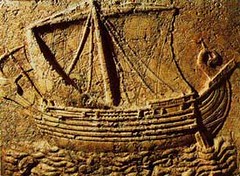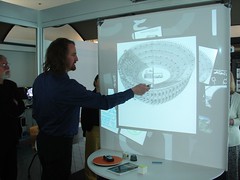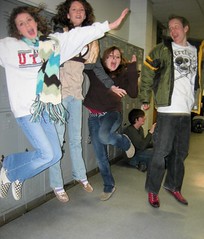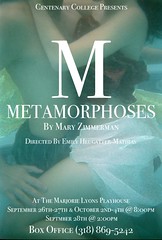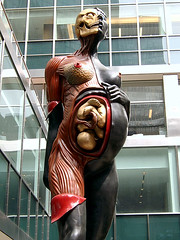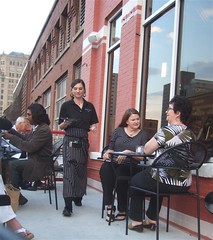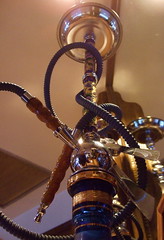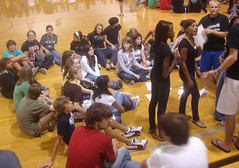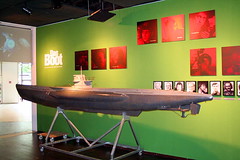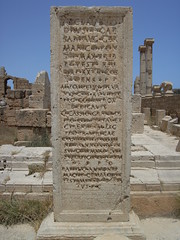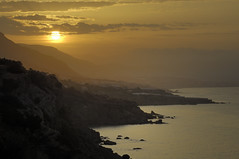Monday, September 29, 2008
USA Today and the Gannett Co, owner of the Shreveport Times
USA TODAY was founded in 1982 with the goal of providing a national newspaper in the U.S. market, where generally only a single local newspaper was available. Colorful and bold, with many large diagrams, charts, and photographs, it contrasted with the relatively colorless papers of the time such as The Wall Street Journal and The New York Times.
Gannett Company, Inc. (NYSE: GCI) is a publicly-traded media holding company based in the United States. It is the largest U.S. newspaper publisher as measured by total daily circulation.
Gannett Company, Inc. was founded in 1923 by Frank Gannett in Rochester, New York.
Gannett's media properties include many newspapers among the top 50 in the United States, and numerous television stations in the top 10 U.S. television markets.
In addition to USA Today, the nation's largest-circulation paper, Gannett owns 85 daily papers and 900 non-daily papers in the United States and Britain, as well as 23 television stations. The company is valued at $4.8 billion, says washingtonpost.com.
The policy on Gannett newspaper articles are to pull them from the web and charge you for access - after about 2 weeks of publication.
Sunday, September 28, 2008
Review of Man on Wire, currently showing indie movie at RFC
If you were in Paris in the romantic late 60’s you were catching a glimpse of Phillippe Petit, a gifted young magician, mime, pickpocket and wire walker.
Though he became a star performer in Paris, Petit’s ambition lay far beyond his home. Being constructed in NYC was a stunning project called the World Trade Center. Petit felt that the WTC would be the ultimate challenge for his unusual skills in wire-walking.
The movie Man On Wire is the 90-minute story of Petit’s struggle to build a team among his freewheeling peers and stage their illegal assault upon the WTC.
It is a well-paced and absorbing movie. Petit, well-preserved and vibrant at age 58, tells the story. He has the footage from France in the 70’s when his conspiracy was set in motion.
It is almost a movie for all ages. There is one quasi-comic but adult scene in which the hero pauses to enjoy one of his many female admirers after his triumph high above NYC.
Man On Wire is a stimulating interchange with a gifted and marvelously wacky fellow. I recommend it wholeheartedly.
Robinson Film Center schedule.
How well does this critical essay follow my standards for reviews?
Does this essay leave you with questions?
Brevity: could the essay be shorter?
Saturday, September 27, 2008
Phoenicia and Graecia
1. Phoenicia was an ancient civilization centered in the north of Canaan, with its heartland along the coastal regions of modern day Lebanon, Syria and __ .
2. The Levant was an ancient region in the Eastern end of the Mediterranean. T / F
3. In the realm of language and literature, the Phoenicians are credited with development of the __ .
4. Phoenicians must be related to the Jewish peoples. T / F
5. Jabal is Arabic for a) monument b) mountain c) knife wound d) mascara.
6. Spain makes the biggest part of what we refer to as the __ Peninsula.
7. The Muslim Arabs invaded Christian European territory
by ship. T / F
8. S’il vous plait must mean a) thank you b) best regards
c) please d) if you must go . . .
9. Drama, including tragedy and comedy, is one of the arts that was not created by the Romans nor by the Greeks.
T / F
10. The Times review of Abby Singer’s Bistro featured two pieces of grilled, marinated __, which were served on a bed of arugula with tomatoes, olives and prosciutto.
11. The Times reviews notes that “My friend scrapped off the onions — not an onion person myself, I couldn't blame her.” That was a) illiterate in at least 2 ways b) a marvelous moment to share with the reader.
12. The two principal elements of a review, according to your teacher, are __ and __ .
13. Sparta vs Athens: the wars that took place about 400 BCE on the __ Peninsula.
14. To the Greeks, withholding intimate contact from their husbands - to stop the war - seems to be a a) ridiculous idea b) clever idea in a play by Aristophanes called Lysistrata.
15. Characterized by sinuous, asymmetrical lines based on plant forms, this style was used in architecture, interior design, graphic art and design, jewelry, and glass. It was international in scope and was called __ __ .
Answers -
1. Israel
2. true
3. alphabet
4. true
5. b mountain
6. Iberian
7. true
8. c please
9. false
10. mozzarella / cheese
11. a illiterate
12. description, evaluation
13. Peloponnese
14. a ridiculous
15. art nouveau
Friday, September 26, 2008
David Macaulay's book on Roman engineering and the building arts: City, aka Roman City
David Macaualay (born December 2, 1946 in Lancashire, England) is an author and illustrator. He is an alumnus and faculty member at the Rhode Island School of Design.
Although originally from the UK, Macaulay moved to Bloomfield, New Jersey at the age of eleven. It was in the U.S. that he began drawing. After graduating from high school in Cumberland, Rhode Island in 1964, he enrolled in the Rhode Island School of Design (RISD), from which he received a bachelor's degree in architecture. He spent his fifth year at RISD in the European Honors Program, studying in Rome, Herculaneum and Pompeii.
Macaulay is the author of several books on architecture and design. His first book, Cathedral (1973), was a history, extensively illustrated with pen-and-ink drawings, of the construction of a fictitious but typical Gothic cathedral.
This was followed by a series of books of the same type: City (1974), on the construction of Verbonia, a fictitious but typical Roman city; Pyramid (1975), on the building of monuments to the Egyptian Pharaohs; Castle (1977), on the construction of Aberwyvern castle, a fictitious but typical Medieval Castle; Mill (1983), on the evolution of New England mills; and Mosque (2003).
Other books in this series are Underground (1976), which describes the building foundations and support structures (such as water and sewer pipes) that underlie a typical city intersection, and Unbuilding (1980), which describes the hypothetical dismantling of the Empire State Building in preparation for re-erection in Asia.
Macaulay has illustrated a number of other books, including the popular The Way Things Work (1988, text by Neil Ardley) which was expanded and re-released as The New Way Things Work (1998). These works remain his most commercially successful. He has also written a number of children's fiction books.
His books often display a whimsical humor. Illustrations in The Way Things Work depict cave people and woolly mammoths operating giant-sized versions of the devices he is explaining. Motel of the Mysteries, written in 1979 following the 1976-1979 exhibition of the Tutankhamun relics in the USA, concerns the discovery by future archaeologists of an American motel and the archaeologists' ingenious interpretation of the motel and its contents as a funerary and temple complex.
I'm looking forward to seeing you digest the video production of his marvelous work, Roman City. "All roads lead to Rome," for the next week.
Let us set an institutional standard: there will be a web site review quiz - open notes - every Thurs unless otherwise announced
Essay option: some weeks - when I've got the extra energy - the weekly review will call for a brief essay based specifically on the web site notes.
The web site is your text. Your teacher writes it for you as an eclectic source of information and stimulation. It is also a model for you of instructional composition and general communication. You are expected to read it as your homework.
As I hope you can see, I do not copy and paste large blocks of material just for the sake of taking your time. My standard for what to link to and what to quote and what to present, in general, is my sense of what you're going to face in college classes and in your general discourse as part of the educated class of the world.
When I present material on these pages I travel in space and time to when and where I learned this material and when I've used it. I also see your faces as I write and choose this material. Really, it's You, not the canon, that I care about as I write.
Amen.
Wednesday, September 24, 2008
The Metamorphosis is a short story by Franz Kafka; Metamorphoses is a series of tales by the Roman writer Ovid
A transformation, as by magic or sorcery.
A marked change in appearance, character, condition, or function.
Biology. A change in the form and often habits of an animal during normal development after the embryonic stage. Metamorphosis includes, in insects, the transformation of a maggot into an adult fly and a caterpillar into a butterfly and, in amphibians, the changing of a tadpole into a frog.
.
[Latin metamorphōsis, from Greek, from metamorphoun, to transform : meta-, meta- + morphē, form.]
A modern version of Ovid's Metamorphoses at Centenary College
At Centenary College the contemporary Metamorphoses is an award-winning play by an extraordinary playwright and director, Mary Zimmerman. . .
Metamorphoses is a play by American playwright Mary Zimmerman adapted from the classic Ovid poem, Metamorphoses. The play premiered in 1996 as Six Myths at Northwestern University and later the Lookingglass Theatre in Chicago. With the change of title, play open off-Broadway in October 2001 at the Second Stage Theatre, and later transferred to Broadway on 21 February 2002 at the Circle in the Square Theatre,
Characters
Creation
King Midas
Alcyone and Ceyx
Erysichthon
Orpheus and Eurydice
Pomona and Vertumnus
Myrrha
Phaeton
Eros and Psyche
Baucis and Philemon
The play is staged as a series of vignettes based on scenes from the Ovid poem, with some given contemporary characteristics on a 3/4 thrust stage, engulfed in one meter of water.
Tuesday, September 23, 2008
Easily the world's most controversial artist of the day: damien hirst
Hirst dominated the art scene in Britain during the 1990s and is internationally renowned. During the 1990s his career was closely linked with the collector Charles Saatchi, but increasing frictions came to a head in 2003 and the relationship ended.
Death is a central theme in Hirst's works. He became famous for a series in which dead animals (including a shark, a sheep and a cow) are preserved—sometimes having been dissected—in formaldehyde. His most iconic work is The Physical Impossibility of Death in the Mind of Someone Living, a 14-foot (4.3 m) tiger shark immersed in formaldehyde in a vitrine. Its sale in 2004 made him the world's second most expensive living artist after Jasper Johns.
In June 2007, Hirst overtook Jasper Johns when his Lullaby Spring sold for £9.65 million at Sotheby's in London.[1] On 30 August 2007, Hirst outdid his previous sale of Lullaby Spring with For The Love of God which sold for £50 million to an unknown investment group. [2] He is also known for "spin paintings," made on a spinning circular surface, and "spot paintings," which are rows of randomly-coloured circles.
In September 2008, he took an unprecedented move for an artist of his status by selling a complete show, Beautiful Inside My Head Forever, at Sotheby's by auction and by-passing his long-standing galleries,[3] The auction exceeded all predictions, raising £111 million ($198 million), breaking the record for a one-artist auction[4] as well as Hirst's own record with £10.3 million for The Golden Calf, an animal with 18-carat gold horns and hooves, preserved in formaldehyde.[3]
Ripe for critical reviews: indie movies at Robinson Film Center and an ambitious menu at Abby Singer's Bistro
The food at Abby Singer;s Bistro is perfect for the reviewer: it is not the standard local fare and it is not terribly expensive. In fact, here's the supper menu.
My favorite dish is the vegetarian Roasted Portabella Mushroom Sandwich, which features asiago cheese, roma tomatoes, arugula, roasted garlic aioli, shaved red onion and sautéed peppers for $8.
Here's a Times review of a supper at the bistro. Watch for the major elements of a review: a) description and b) evaluation.
Looking forward to reading your reviews of movies and / or meals at RFC.
Reviewing the cultural and artful side of Shreveport: the shisha at Mona's Cafe
The critic is a writer devoted to both description and evaluation. And that is the rubric for grading your essays.
Description will address decor, ingredients, appearance, smells, colors, and mood. Description is a relatively non-biased activity.
Evaluation is a considered judgment and measurement which is expected to be opinionated. It will address qualities under the general heading of appealing or, perhaps, puzzling.
Here's an example of critical writing on Mona's Cafe which is light-hearted yet descriptive and evaluative.
Additionally, we have discussed the value of the modern review: a droll commentary on video to be perhaps aimed at the Youtube audience. It should also be based on the classic standards: description and evaluation.
Lysistrata: one of the most notable of the classical comedies
Led by the title character, Lysistrata, the story's female characters barricade the public funds building and withhold sex from their husbands to end the Peloponnesian War and secure peace.
In doing so, Lysistrata engages the support of women from Sparta, Boeotia, and Corinth. All of the other women are first against Lysistrata's suggestion to withhold sex. Finally, they agree to swearing an oath of allegiance by drinking wine from a phallic shaped flask, as the traditional implement (an upturned shield) would have been a symbol of actions opposed to the aims of the women. This action is ironic and therefore comical, because Greek men believed women had no self-restraint, a lack displayed in their alleged fondness for wine as well as for sex.
Art nouveau illustrator Aubrey Beardsley
Most of his images are done in ink, and feature large dark areas contrasted with large blank ones, and areas of fine detail contrasted with areas with none at all.
Aubrey Beardsley was the most controversial artist of the Art Nouveau era, renowned for his dark and perverse images and grotesque erotica, which were the main themes of his later work. His most famous erotic illustrations were on themes of history and mythology, including his illustrations for Aristophanes' Lysistrata and Wilde's Salomé.
Beardsley illustrated Oscar Wilde's play Salomé - the play eventually premiered in Paris in 1896. He also produced extensive illustrations for books and magazines (e.g. for a deluxe edition of Sir Thomas Malory's Le Morte d'Arthur) and worked for magazines like The Savoy and The Studio. Beardsley also wrote Under the Hill, an unfinished tale based loosely on the legend of Tannhäuser.
Beardsley was also a caricaturist and did some political cartoons, mirroring Wilde's irreverent wit in art. Beardsley's work reflected the decadence of his era and his influence was enormous, clearly visible in the work of the French Symbolists, the Poster art Movement of the 1890s and the work of many later-period Art Nouveau artists like Pape and Clarke.
Sunday, September 21, 2008
Roma: researxh into the arts of the Romans of the empire period
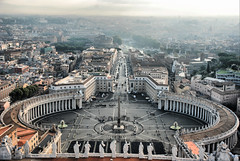
Roma (Italia). Plaza de San Pedro vista desde la cúpula de la Basílica del Vaticano.
Originally uploaded by josemazcona
Let us dive in upon the Roman arts. For the sake of this unit we will expand the artful architectural world to include building technology. For the Romans taught the world much about the art of engineering.
Each powerpoint report should face the issue of what was different between the Roman and earlier Greek version of the item.
Please follow the roll and use the same number you were given in the recent Greek unit.
1. music
2. musical instruments
3. costume
4. dance
5. pottery
6. ship design
7. artful implements of war
8. architecture
9. Roman arch
10. aqueducts
11. Roman Republic
12. Augustus Caesar
13. Julius Caesar
14.. Coliseum of Rome
15. Etruscans
16. theaters
17. public baths
18. Roman forum
19. Roman arch and dome
20. Pantheon
21. Roman feast & cuisine
22. Virgil and the Aeneid
23. mosaics
24. trompe l’oeil painting
25. Church of Hagia Sophia in Constantinople
26. Pompeii and its art
27. Roman fountains
28. Roman ghetto
29. Triumphal arch
- No less than 10 slides in a powerpoint presentation.
- 15 pts completion.
- One day late or more - presentations will get 10 pts.
Wed
Presentations of 1 - 7 (or more)
Thurs
Open notes quiz
Presentations 8 - 12
Fri
Presentations 13 - 20
Mon
Presentations 21 - 29
Tuesday, September 16, 2008
Two places to see independent movies in Shreveport: Robinson Film Center and Centenary Film Society
Check out the semester schedule and be aware that most of these films will make you think.
You'll notice that they are free - if only shown on week nights.
Robinson Film Center is my favorite hang out in Spt. A converted store on Texas St, it has a restaurant - Abby Singer's Bistro - with the most interesting menu in town. It is also affordable.
RFC is an art movie center that is trying to program the latest indie flics as well as classics. Check out their schedule. And check the bistro menu, s'il vous plait.
Friday, September 12, 2008
Das Boot and the classic movies for Fine Arts
Wikipedia says,
Das Boot (German for The Boat/The Submarine) is a 1981 feature film directed by Wolfgang Petersen, adapted from a novel of the same name by Lothar-Günther Buchheim. Hans-Joachim Krug, former first officer on U-219, served as a consultant, as did Heinrich Lehmann-Willenbrock, the captain of the real U-96.
The movie has an anti-war message. One of Petersen's goals was to guide the audience through "a journey to the edge of the mind" (the film's German tagline [Eine Reise ans Ende des Verstandes]), showing "what war is all about." Petersen heightened suspense by very rarely showing any external views of the submarine unless it is running on the surface and relying on sounds to convey action outside the boat, thus showing the audience only the claustrophobic interior the crew would see. The original 1981 version cost DM 32 million to make. The director's meticulous attention to detail resulted in a historically accurate movie that was a critical and financial success, grossing over $70 million worldwide between its two releases in 1981 and 1997. Its high production cost ranks it among the most expensive films in the history of German cinema. It was the second most expensive up until that time, except for Metropolis. However, Metropolis was made in the 1920s, a period of hyperinflation in Germany, which makes direct cost comparisons between the two eras difficult.
The curious and minuscule island of Gibraltar...
The name of the territory is derived from the Arabic name Jabal Tāriq (جبل طارق), meaning "mountain of Tariq".[1] It refers to the geological formation, the Rock of Gibraltar, which in turn was named for the Berber Umayyad general Tariq ibn-Ziyad who led the initial incursion into Iberia in advance of the main Moorish force in 711 under the command of Umayyad Caliph Al-Walid I. Earlier, it was known as Mons Calpe, one of the Pillars of Hercules. Today, Gibraltar is known colloquially as Gib or The Rock.
The Phoenicians were travelers and traders
Phoenician civilization was an enterprising maritime trading culture that spread across the Mediterranean between the period of 1550 BC to 300 BC. Though ancient boundaries of such city-centered cultures fluctuated, the city of Tyre seems to have been the southernmost. Sarepta (modern day Sarafand) between Sidon and Tyre, is the most thoroughly excavated city of the Phoenician homeland. The Phoenicians often traded by means of a galley, a man-powered sailing vessel and are credited with the invention of the bireme.[2]
It is uncertain to what extent the Phoenicians viewed themselves as a single ethnicity. Their civilization was organized in city-states, similar to ancient Greece. Each city-state was an independent unit politically, although they could come into conflict, be dominated by another city-state, or collaborate in leagues or alliances. Tyre and Sidon were the most powerful of the Phoenician states in the Levant, but were not as powerful as the North African ones.[citation needed]
The Phoenicians were also the first state-level society to make extensive use of the alphabet, and the Canaanite-Phoenician alphabet is generally believed to be the ancestor of all modern alphabets.
Phoenicians spoke the Phoenician language, which belongs to the group of Canaanite languages in the Semitic language family. Through their maritime trade, the Phoenicians spread the use of the alphabet to North Africa and Europe where it was adopted by the Greeks, who later passed it on to the Romans and Etruscans.[3] In addition to their many inscriptions, the Phoenicians wrote many books, which have not survived.
Greek quiz 1.0
1. The sea that lies both north and east of Greece is one that Homer called “the wine-dark sea.” It is the __.
2. Sparta, Olympia and Corinth are on the principal peninsula of Greece. This region has four fingers (small peninsulas) and is called the ___ .
3. Across the Adriatic Sea from Greece lies a nation whose southern region was once part of the Greek Empire: __ .
4. Place whose name - when translated from the Latin - implies “middle” and “earth,” or “terrain,” therefore a region in the middle of two great regions of the earth. The place is the __ __.
5. The ancient culture and nation - the name means “purple” - that has, in the modern era, become Lebanon: __ .
6. Israel is both a historic name and the contemporary name of a recently-formed nation. Its ancient name is __ .
7. The great Greek city of Egypt: __ .
8. Give the modern name of an ancient Turkish city that has borne 3 names: __ .
9. What is the mnemonic that allows us to remember the names - in order - of the most famous Greek philosophers?
10. What material object - disallowing sculpture - performed the same role as photography in the Classical Greek era?
11. The dirty little secret of Athenian Democracy: the use of a large number of __ .
12. Who developed the earlier notable civilization?
a) Cretans b) Cretins c) Athenians d) Spartans.
13. The word that denotes an advanced sense of beauty and purity of taste: __ .
14. The building is the Parthenon; the mesa upon which it lies is the __ .
15. Eleuthera is a gorgeous island in the Bahamas. Eleutherae is an inland location in the nation of __ .
16. Aphrodite would be known by the Romans as __ .
17. The Norwegian explorer and author who tested the trekking possibilities of the ancient Mesopotamians, Polynesians and Egyptians. Thor __ .
18. The notable Greek island that suffered an enormous volcanic explosion about 1600 BCE.
19. An example of sagging in ancient Greek statuary:
__ __ .
20. __ is a philosophy of art and life that emphasizes order, balance, and simplicity.
1. Aegean
2. Peloponnesus
3. L' Italia
4. Mediterranean
5. Phoenicia
6. Palestine
7. Alexandria
8. Istanbul (Constantinople, Byzantium)
9. Spa (a hot-springs resort in Belgium)
10. pottery
11.slaves
12. Cretans
13. aesthetics
14. Acropolis
15. Greece
16. Venus
17. Heyerdahl
18. Santorini (aka Thera)
19. the Venus de Milo
20. classicism
Make-up quiz? Write an essay on the Greeks using a great number of these terms.
Wednesday, September 10, 2008
Greeks and the sensual world
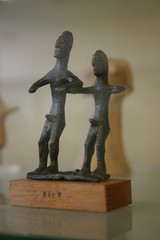
GREEK SEX
Originally uploaded by salo fjord
Students must have an acquaintanceship with the Greek view of sexuality and the arts.
From a video in our school library, part of a series called Greek Fire:
"Ancient Greek myths invlove endless tales of seduction. In ancient Greek pottery, painting and poetry, you will find exuberant sexuality and uninhibited acitivity in abundance.
Sappho of the island of Lesbos - the first poetess of the Western world - gives her name to lesbianism. Male homosexuals can turn back to Plato to find that their way of life was regarded as noble and praiseworthy.
But ancient Greece was no sexual utopia. In Greek drama, there is a profound male terror in front of the mystery of woman. Men saw in women something dark, shadowy and pre-rational."
Tuesday, September 9, 2008
One of the best-known of the Greek isles: Santorini
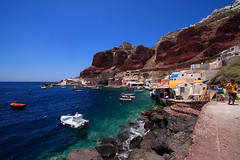
Oia, Santorini Island, Greece June 2006
Originally uploaded by ehpien
Santorini is a small, circular archipelago of volcanic islands located in the southern Aegean Sea. It is also known as Thera and is part of the Cyclades group of islands. The population is 13,670, says Wikipedia.
Santorini is essentially what remains of an enormous volcanic explosion, destroying the earliest settlements on what was formerly a single island, and leading to the creation of the current geological caldera. Its spectacular physical beauty, along with a dynamic nightlife, have made the island one of Europe's tourist hotspots.
The devastating volcanic eruption of Thera - about 1600 BCE - has become the most famous single event in the Aegean before the fall of Troy. This may have been one of the biggest volcanic eruptions on Earth in the last few thousand years.
This location is on the list of possible locations for the fabled city of Atlantis. As with most myths, connections to real places are usually dubious and many scientists often are skeptical. However some archaeological, seismological, and vulcanological evidence [11] [12] [13] (popularized on The History Channel show Lost Worlds episode "Atlantis" [14]) regarding Crete, Santorini, and the description of Atlantis from Plato has been presented linking the Atlantis myth to Santorini.
Sunday, September 7, 2008
Thor Heyerdahl, extraordinary 20th century explorer and author

Ra II
Originally uploaded by MGSpiller
Thor Heyerdahl (1914 - 2002) was a Norwegian ethnographer and adventurer with a scientific background in zoology and geography, says Wikipedia. Heyerdahl became famous for his Kon-Tiki expedition, in which he sailed 4,300 miles (8,000 km) by raft from South America to the Tuamotu Islands.
In 1969 and 1970, Heyerdahl built two boats from papyrus and attempted to cross the Atlantic from Morocco in Africa. Based on drawings and models from ancient Egypt, the first boat, named Ra, was constructed by boat builders from Lake Chad in the Republic of Chad using reed obtained from Lake Tana in Ethiopia and launched into the Atlantic Ocean from the coast of Morocco. After a number of weeks, Ra took on water after its crew made modifications to the vessel that caused it to sag and break apart. The ship was abandoned and the following year, another similar vessel, Ra II was built by boatmen from Lake Titicaca in Bolivia and likewise set sail across the Atlantic from Morocco, this time with great success. The boat reached Barbados, thus demonstrating that mariners could have made trans-Atlantic voyages by sailing with the Canary Current.[1] While the purpose of the Ra voyages was merely to prove the seaworthiness of ancient vessels constructed of buoyant reeds, others contentiously have cited the success of the Ra II expedition as evidence that Egyptian mariners could have journeyed, by design or happenstance, to the New World in prehistoric times.
Heyerdahl built yet another reed boat, Tigris, which was intended to demonstrate that trade and migration could have linked Mesopotamia with the Indus Valley Civilization in what is now modern-day Pakistan. Tigris was built in Iraq and sailed with its international crew through the Persian Gulf to Pakistan and made its way into the Red Sea. After about 5 months at sea and still remaining seaworthy, the Tigris was deliberately burnt in Djibouti, on April 3, 1978 as a protest against the wars raging on every side in the Red Sea and Horn of Africa.
Apollo and Aphrodite: week of Sept 8 - 12 in Fine Arts Survey

CMHS: Sam Norton, Jordan Mitchell
Originally uploaded by trudeau
Mon and Tues: in library for research on classical Greek art.
Thurs: open notes test on Greek web site articles.
Fri: individual presentations begin in alpha order.
Presentations
- 10 large images to be projected in classroom and briefly commented upon by student - in person or using voice-over recording.
Remarks should encompass most of these items -
- era
- location
- significance
- your personal observations or insights
Topics -
1. sculpture
2. comedy
3. tragedy
4. stage and drama
5. music
6. musical instruments
7. costume
8. dance
9. pottery
10. ship design
11. artful implements of war
12. architecture
13. Parthenon
14. Olympics
15. Herodotus
16. Aeschylus
17. Euripides
18. Epicurus
19. Alexander
20. Socrates
21. Plato
22. Aristotle
23. Crete / Minoan art
24. Hellenistic art: mosaics
25. Byzantine Empire art
26. Mycenaean art
27. Athens, 400 BCE
28. Athens, 2008
29. Phidias
You may trade topics to accommodate areas of interest.
Aphrodite / Vénus de Milo
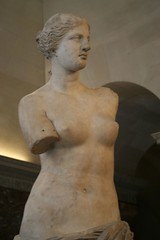
Aphrodite dite Vénus de Milo (détail)
Originally uploaded by paulogyensfan
The Aphrodite of Milos, better known as the Venus de Milo, is one of the most famous works of ancient Greek sculpture.
Created at some time between 130 and 100 BC, it is believed to depict Aphrodite (called Venus by the Romans), the Greek goddess of love and beauty.
It is a marble sculpture, slightly larger than life size at 6.7 ft high, says Wikipedia. Its arms and original plinth have been lost. From an inscription that was on its plinth, it is thought to be the work of Alexandros of Antioch; it was earlier mistakenly attributed to the master sculptor Praxiteles.
It is at present on display at the Louvre Museum in Paris.
Although the Venus de Milo is widely renowned for the mystery of her missing arms among people unfamiliar with any other incomplete Greek or Roman sculpture,[1] enough evidence remains to prove that the right arm of the goddess was lowered across the torso with the right hand resting on the raised left knee so the sliding drapery wrapped around the hips and legs could be held in place.
I've seen a bit of sagging, but this example of lowriding is off the hook.
Discobolus of Myron: exemplary Greek realism from the late Classical period

Discobolus of Myron
Originally uploaded by AdrianCook
Myron of Eleutherae - 480-440 BC - was an Athenian sculptor, says wikipedia.org. He was born in Eleutherae on the borders of Boeotia and Attica.
Chionis, a seventh century Olympic victor from Sparta, was commemorated in this idealized bronze by Myron.
He worked almost exclusively in bronze:[4] and though he made some statues of gods and heroes, his fame rested principally upon his representations of athletes, in which he made a revolution, according to commentators in Antiquity, by introducing greater boldness of pose and a more perfect rhythm, subordinating the parts to the whole.
Saturday, September 6, 2008
Top 10 things to know about ancient Greece and the arts
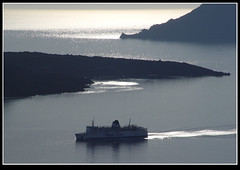
^
Originally uploaded by Luis Manuel Guaida
1. Democracy and art was enabled partly by the system of slavery.
2. The Greek Empire, which preceded the Roman Empire, included parts of Turkey and Italy. See Greek temples in 3 nations.
3. The Minoan civilization, on the island of Crete, preceded the rise of Athens, the center of art, and Sparta, the center of militarism.
4. The city-states of Sparta and Corinth as well as the temples at Olympia are on a peninsula known as the Peloponnesus.
5. Greek pottery is so finely painted that it is an important source of historic evidence. Their pottery resembles photography.
6. Helmets, shields and ships show that the Greeks had a taste for the fine curve and graceful proportion. They had a high sense of the
aesthetic: artistic beauty and taste.
7. The Spartans pursued the art of war, the Athenians were equally serious about the aesthetics in every other phase of life.
8. The name of the great temple above Athens is the Parthenon, named for Athena Parthenos, "Athena the the virgin." Btw, here we see a connection with Mary, virgin mother of Jesus. The mesa on which the extraordinary temple is built is the Acropolis (acrophobia, fear of heights).
9. The shocking realism achieved by Greek sculptors is perhaps exemplified by the Discus Thrower created by Myron of Eleutherae about 450 BC.
10. Spa, a word denoting a health center, is an acronym for the 3 great Athenian thinkers: Socrates, Plato and Aristotle. "Spa" gives us the chronological order.
Thursday, September 4, 2008
Egypt to Greece
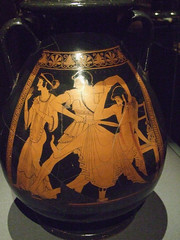
Orestes killing Aegisthus – red-figured vase bc 500 – Oresztész megöli Aigiszthoszt – vörösalakos váza, i. e. 500 k. – Bécs, Kunsthistorisches Museum
Originally uploaded by xerxespersepolis
The map of this mega-influential Mediterranean region -
- Medi terra anean
- Aegean Sea
- Black Sea
- Red Sea
- Italy
- Greece
- Macedonia
- Asia Minor (Turkey)
- Syria
- Phoenicia (Lebanon)
- Palestine / Judaea (Israel)
- Sinai Peninsula
- Egypt
- Libya
- Alexandria
- Jerusalem
- Troy
- Byzantium (Constantinople, Istanbul)
- Athens
Wednesday, September 3, 2008
Classic fine arts: ancient Greece

The eternal symbol of Greece
Originally uploaded by Andreas Constantinou /CY/
To study the classics is to invest in your future. All your life you will see references to Egypt, Greece and Rome in movies, literature, journalism, sitcoms and in conversation with educated people.
Check out this perspective on Classics at worldbookonline.com.
Ciutat del Caire i Giza (Egypt)

(0371) Ciutat del Caire i Giza (Egypt)
Originally uploaded by Joanot
Follow this photo to see an amazing set of images of Egipte by a master photographer. Wow.
Worldbookonline.com a free resource for all La students

The World Is My Book
Originally uploaded by Bukit95
Please go to Worldbookonline.com to enjoy a terrific resource. It is a service paid for by the state so that we may all have a solid reference work no matter where we are studying.
Log in: louisiana
password: highschool


